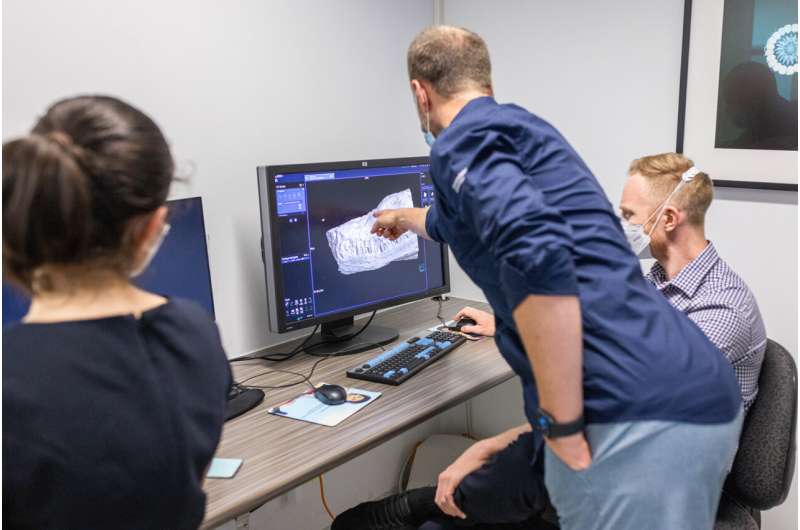This article has been reviewed according to Science X's editorial process and policies. Editors have highlighted the following attributes while ensuring the content's credibility:
fact-checked
peer-reviewed publication
proofread
AI-based technique speeds up the analysis of fossils

Queensland Museum and James Cook University scientists are using AI to unlock the mysteries of our fossil past. The scientists have developed an AI-based technique that has sped up the analysis of fossils, taking a months-long process to just days. The study, "Accelerating segmentation of fossil CT scans through Deep Learning," is published in Scientific Reports.
Queensland Museum paleontologist and JCU Senior Lecturer Dr. Espen Knutsen, alongside JCU Deep Learning expert Senior Lecturer Dmitry Konovalov have been working on how to rapidly analyze fossils encased in rock.
"Computed Tomography (CT) scanning provides paleontologists with a way to look inside bone and study fragile fossil material without the need for physically removing the surrounding rock," Dr. Knutsen said.
Dr. Knutsen said the CT datasets consist of a stack of X-ray image slices which are imported into a computer—but then need to be manually told what parts of each slice is fossil and what is rock before it can produce a 3D model.
"With ever-improving equipment, the size of datasets and image resolution have significantly increased, which means a significant amount of time invested in manually segmenting data," Dr. Knutsen said.
"With datasets often exceeding 2,000 images per sample, this process can take months to complete."

Instead, the scientists manually segmented about 2% of 2,000 image slices and used these to train a Deep Learning model which completed the task by itself.
"We achieved a highly precise 3D representation of a tiny Triassic reptile from Queensland that was around 240 million-years-old. This was completed in days rather than months," Dr. Knutsen said.
The research removes a huge bottleneck in modern paleontology, allowing researchers to rapidly generate more data from fossil collections and spend more time exploring our ancient past.
The researchers will now work to expand the capability of their Deep Learning model to be used on other and more diverse fossil materials.
More information: Espen M. Knutsen et al, Accelerating segmentation of fossil CT scans through Deep Learning, Scientific Reports (2024). DOI: 10.1038/s41598-024-71245-1
Journal information: Scientific Reports
Provided by Queensland Museum




















